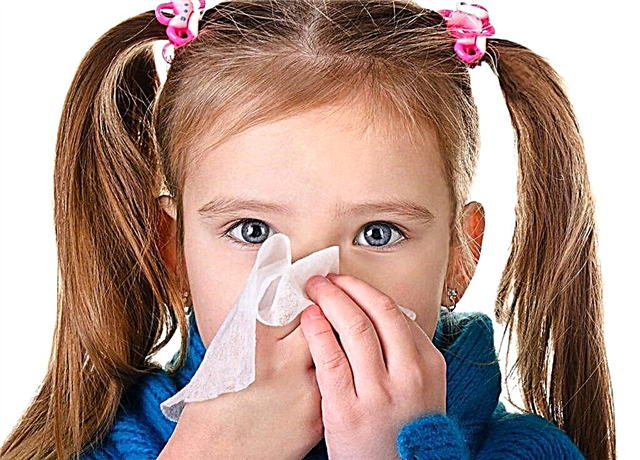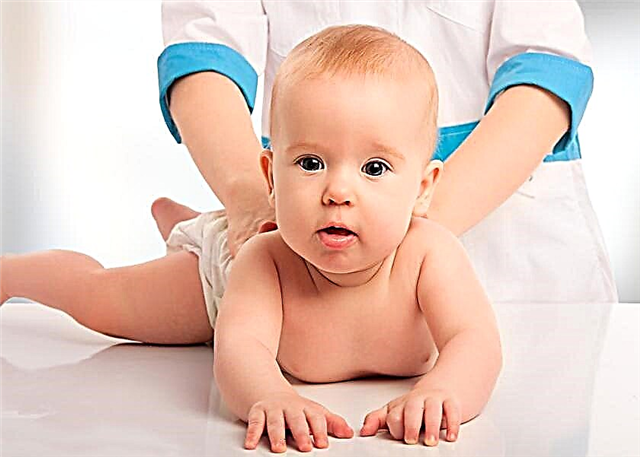
Correct occlusion is very important for a person, because with pathology, the load on the most "loaded" teeth increases significantly, which is fraught with loss of teeth. In addition, a pathological bite changes the appearance of the face, it can even interfere with the child's normal chewing and speaking. It is worthwhile to understand in more detail the methods of correcting the wrong taste in a child.

Development periods
Pathology does not develop immediately, it is formed in several stages:
- Newborn. This period of time is characterized by the complete absence of teeth in an infant, but an experienced orthodontist is already able to determine how the incisors and molars will be located. The lower jaw of a newborn is located slightly behind, and this is quite normal.
- The appearance of the first milk teeth. As soon as the first teeth begin to appear in the baby, the lower jaw is noticeably aligned. A little later, the teeth from above (most often the incisors) begin to cover the lower teeth by almost half.
- Alignment of milk teeth. At this stage, it is considered quite normal if the baby has gaps between the inconsistent teeth and the bumps are erased. This process is smooth, gradual and is usually considered complete by the age of six. By this age, the bite becomes almost straight (the upper teeth no longer cover the lower jaw).
- Change of dairy to indigenous. This process in all children proceeds with different intensity, but usually it lasts up to 11-12 years. During this time, milk teeth fall out, instead of them permanent, root teeth grow. Normally, the upper teeth begin to cover the lower ones, but no more than one third of the crown size. Cracks and gaps between the teeth should not normally be observed.


Reasons for violations
The formation of a pathological bite is usually a whole set of reasons why there was no correct development. Most often, experts talk about a hereditary factor - if one of the parents has a bite that is far from ideal, then the child has every chance of facing the same problem.
An incorrect bite can become due to the fact that milk teeth for some reason (for example, due to a dental disease) were removed ahead of schedule. Belated, late teething is also cause for concern. It may well cause the formation of a pathological bite.
An incorrect bite can be in a child who is fed too long with mashed soft food, in a baby suffering from frequent diseases of the ENT organs (for example, with adenoids, the bite changes significantly). Sucking on the pacifier for too long may be the cause. The cause of the pathology can also be a bad habit of sucking fingers.
Many orthodontists tend to believe that problems with bite in a child begin in the womb, because the formation of the jaw and all its components occurs long before birth. It is believed that anemia of the expectant mother, metabolic disorders in her body, acute viral infections in the first trimester of pregnancy are considered factors that negatively affect the formation of the jaw bone frame of the fetus.
The role of proper nutrition should not be underestimated. - if the body of a newborn, the baby does not have enough calcium and fluoride, then the risk of developing bite pathologies increases tenfold.
The bite is also affected by the state of the oral cavity - in a child who regularly suffers from gum disease, stomatitis and other inflammatory problems in the mouth, the risk of malocclusion is much higher.


Effects
A cosmetic defect that becomes more or less noticeable if a child has an incorrect bite - just the tip of the iceberg. More serious consequences of pathology lie in the fact that the main function of the teeth is disrupted. The child begins to chew food incorrectly, which quite often leads to diseases of the stomach, liver, pancreas, intestines at a very early age.
The bite affects the clarity and quality of speech. With pathology, the child may begin to suffer from speech defects, and this will prevent him from communicating normally with peers. This is where the roots of severe psychological problems grow in primary school age or older school age.
Children with malocclusion increase the risk of developing periodontal disease, their teeth are more vulnerable, children lose many units very early due to excessive wear and tear and improper load - implantation is required.


The most serious consequences concern changes in the temporomandibular joints. Such pathologies can cause persistent painful headaches, hearing loss, and respiratory failure (especially at night).
Norms and deviations
It is customary to assess the final state of the bite after the change of non-permanent primary teeth to molars. Normally, the upper jaw protrudes slightly forward (by one third of the crown length, no more), the teeth from above have close contact with the lower ones. There are no large gaps and crevices between the teeth; there should be no extra and unpaired teeth either.

A correct and healthy bite has several varieties, all of them are considered normal variants. Malocclusion is more diverse in manifestations:
- Distal. This is the most common malocclusion, which is diagnosed in babies with inconsistent teeth, and in children with molars. The upper jaw protrudes significantly forward, the ratio of all teeth is disturbed. Moreover, the upper jaw itself can often be more developed than the lower one.
- Mesial. With this pathology, the lower jaw moves forward. It is usually more developed than the top. A child with such a bite looks somewhat belligerent - the chin is pushed forward, the upper lip sinks slightly.
- Open. With such a pathological bite, the teeth close completely. This is considered the most complex pathology.
- Deep. Due to the development of this pathology, the upper incisors cover the lower teeth by more than a third of the crown size. This is a very common type of pathological bite among children.
- Cross. Such a bite is said to be when the upper and lower jaws are displaced horizontally in relation to each other. The child's face with such a pathology looks asymmetrical, the problem needs long-term correction from a very early age.

Diagnostics
An experienced orthodontist can even tell you if there is a risk of malocclusion, check the condition of the upper and lower jaws in newborns. However, in practice, this is usually not urgently needed. Therefore, many parents turn to this specialist in the direction of a dentist, who, during a routine or unscheduled examination, discovers one or another bite pathology in a child.
The orthodontist conducts an anthropometric study and finds out if there is facial asymmetry. After that, the doctor makes impressions from each jaw, and plaster models are cast from them in the laboratory. According to them, the doctor can tell with great accuracy (up to a millimeter) which teeth and how they are displaced, whether there is twisting, where the most problematic places are located.
An X-ray makes it possible to find out what is inside the gums - how the teeth are formed, how the root canals are located. Only then the doctor checks how chewing is developed in a small patient, how pathology affects speech, whether the bite interferes with free breathing.
A separate discussion is worthy of the question of at what age a child should be taken to an appointment with an orthodontist. Some say that it is better to do this at 5-6 years old, when the teeth begin to change to permanent ones. However, experts warn that noticeable malocclusion in a child of an earlier age is not a reason not to go to the doctor. The earlier the correction starts, the better: while there is an active growth, the problem is corrected much faster and more efficiently.

Methods
Correcting the bite is usually a rather long and laborious task. In modern medicine, several basic methods are used that allow you to cope with the problem:
- hardware treatment;
- Maxillofacial Surgery;
- myotherapy;
- combined methods (when using several methods at once - for example, using devices after surgery);
- non-hardware treatment.


The orthodontist decides which method to choose (based on the results of the examination). The essence of these methods should be described in more detail:
Hardware treatment
Special devices are good at helping to cope with malocclusion in childhood. Such devices can be removable and non-removable, as well as mechanical, guiding and operating. Mechanical - this is the Angle apparatus and any bracket system. Guiding devices are mouthguards and pads through which biting occurs. Operating devices with the help of artificial obstacles protect the teeth from the pressure of the cheek muscles on them. These include Schoncher's records.
Removable plates are usually used to make the teeth grow more evenly under the pressure of the arches, but this is only about correcting the position of the jaws in relation to each other. The plates do not have a pronounced effect on the inclination of the teeth.
When the little one's teeth are twisted, the orthodontist will offer to install a bracket system instead of plates. In case of pain or changes in the temporomandibular joint, a special silicone splint is recommended for the baby, which fits tightly on the dentition and fixes them in a more or less normal position from a physiological point of view. The splint allows all nearby muscles and ligaments to "rest" and relaxes them. From the point of view of modern medicine, such dental trainers (silicone removable devices) are the most effective.


Whatever device is assigned to the child, parents should prepare for the fact that the treatment will be long. For example, braces are worn for at least 1.5-2 years, and removable plates and aligners need to be worn not only during the day for a couple of hours, as many do. You will have to wear them almost constantly. Only such a responsible and consistent approach to therapy (as well as a patient attitude to the treatment process) will help to cope with the problem of malocclusion once and for all.

Myotherapy
This is a very popular method for correcting a pathological occlusion in the practice of orthodontists. It represents the techniques of specific gymnastics, which is aimed at activating and developing certain maxillofacial muscles and muscle groups involved in articulation, chewing, and mimic movements.
This method is usually used for babies with inconsistent teeth - from 3 to 6 years old. At an older age, myotherapy does not show the desired effectiveness as an independent method.
If it is prescribed, then only as an auxiliary method - when wearing the device or after a surgical operation.
For each little patient, the orthodontist prescribes an individual set of exercises, which directly depends on the type and degree of pathology. Most often, such exercises are practiced as clenching the teeth in turn (the upper jaw forward, the lower jaw backward, then vice versa), strong compression of the two jaws, tight lip compression, holding with the lips a light flat object - a ruler or sheet of paper. There is also a set of exercises for the tongue and cheeks.
Myotherapy will also require great patience and hard work from the parents and the child, because the exercises will need to be performed systematically, as the muscles get used to the load, increasing this load and the duration of such "charging" until the feeling of muscle fatigue in the chewing and facial muscles.

Surgical correction
Surgical intervention for correcting the bite in children is not required so often, but sometimes (especially in cases of complex congenital anomalies), a surgeon's scalpel is indispensable. The operations are aimed at shortening the arches or lengthening them, and sometimes even changing the size of the chin.
Surgical intervention is usually indicated only for adolescents who have not been helped by other methods (braces, plates, aligners). Children in 2-3 years old are trying not to do surgery - because of such an intervention, injuries may occur.
Rehabilitation after such an operation is long and rather painful for the child, the risk of infection is high, which is why they try to abandon surgical correction in favor of longer, but more gentle methods of correction.
After the surgery, the patient goes back under the control of the orthopedist, who will help align the bite by using devices for quite a long time.

Distal occlusion correction
Correction of the distal occlusion is very long. It can take several years. Moreover, this pathology is often complicated - signs of a deep bite are added to it. The good news is that the treatment started in childhood usually proceeds faster and brings the desired effect. The most common method is the installation of removable devices and simultaneous myotherapy sessions.

Correction of deep bite
To correct such a pathology in children under 6 years of age, a large amount of solid food is prescribed. It is the tough green apples and croutons that help the dentition get closer to normal. No other treatment is provided until the age of six.
When the child turns six, if croutons and dryers do not help, the doctor selects the necessary apparatus for the child (removable mouth guards, hard or soft plates, silicone trainers).
After 12 years, if the problem is not solved, the doctor puts fixed devices on the child. Simultaneously with treatment for all age categories, a visit to a speech therapist and the use of myotherapeutic gymnastics techniques are shown.

Correction of mesial occlusion
If such a pathological bite is detected in childhood, the child is prescribed wearing a mouthguard or silicone trainer. If the degree of pathology is significant, then the child may be prescribed wearing special orthodontic caps with chin support. If these methods are unsuccessful, the baby may have several lower teeth removed.
In the same way, as with other pathologies of the maxillofacial apparatus, myotherapy is prescribed.
To make exercises easier for the child, dentists come to the rescue, who grind the protruding tubercles of the canines.


Open bite correction
For babies with such a bite defect, the doctor usually immediately prescribes the wearing of devices (mouthguards or a silicone trainer). At the same time, the doctor teaches the parents of the baby myogymnastics. A child with an open bite needs to eat tough foods. Classes with a speech therapist in preschool or primary school age are required.

The devices are usually worn up to 12-13 years old. After this age, the orthodontist evaluates the result and decides on the need for further treatment. If there is such a need, you can put on fixed devices.

Prevention
Consider the following guidelines:
- Even if the child has no visible dental problems, it is advisable to visit the dentist at least once a yearstarting at one year of age.This will help not only to eliminate all arising inflammatory foci in time, but also to timely identify the incipient malocclusion and begin to correct them. The sooner this happens, the more effective the treatment will be.
- All respiratory diseases should be treated in timethat lead to a violation of nasal breathing - to treat or remove adenoids, to prevent chronic rhinitis. The habit of breathing through the mouth not only contributes to ARVI, but also leads to the formation of a pathological bite.
- Small children need, according to the doctor's instructions give vitamin D, since rickets, which can develop due to a lack of this vitamin in the body, affects the condition of the maxillofacial bones.
- Timely need refrain from pacifiers and bottle feed. If the baby already has milk teeth, he does not need a nipple. Ideally, after a year, the child should drink from a cup, and at a year and a half, he should completely part with the pacifier. This will significantly reduce the risk of malocclusion.
- It is important to ensure that the child has sufficient calcium levels in the body... In case of deficiency, be sure to consult a pediatrician and start taking calcium supplements.
- A child who already has several milk teeth may well try tough food... Excessive parental care, which forces them to grind and puree all food, can play a cruel joke on the health of the baby.
- The habit of thumb sucking or the whole fist follows nip in the bud... There is nothing useful in it, but it affects the bite negatively.


For information on how to correct an incorrect bite, see the next video.



